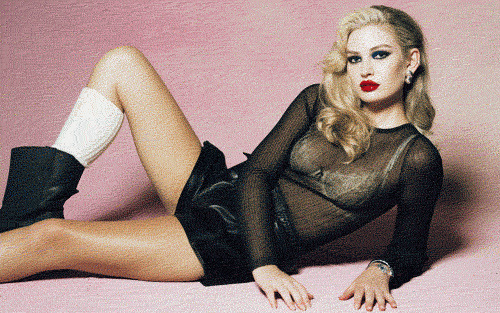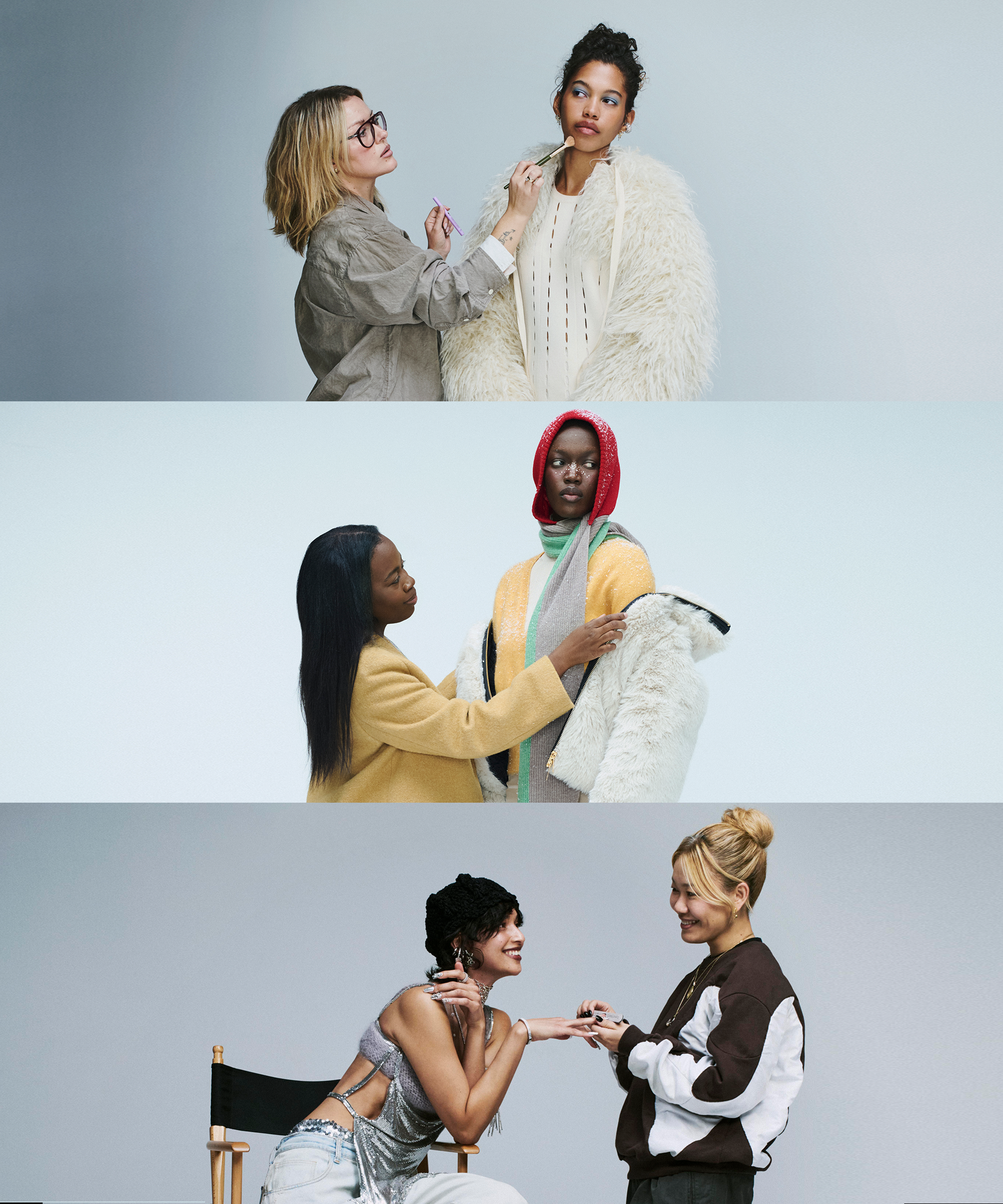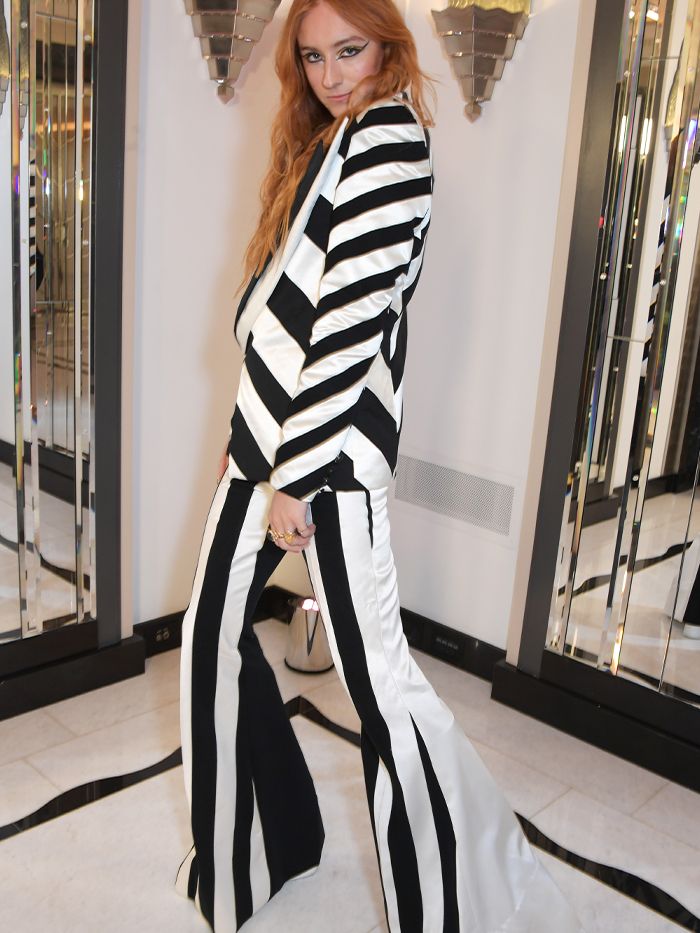
Harris Reed is undoubtedly one of the most exciting designers working in the industry right now, who at only 25 years old has already made a powerful mark. He doesn’t simply make clothes, but uses his designs and platform to spark conversation, fight for inclusivity and champion gender fluidity. Harris only founded his eponymous label three years ago but his aesthetic is firmly established. He mixes aristocratic references with ’70s silhouettes, the grittiness of London nightlife and a glam rock spirit, making a theatrical look which he describes as ‘Romanticism Gone Nonbinary.’ Each collection includes gigantic hats, gowns made from deadstock fabrics and exaggerated flares—signatures which have made his show the hottest ticket during London Fashion Week.
Harry Styles was an early supporter, wearing a tailored suit with a hoop-skirt in tulle and satin on his cover of American Vogue in November 2020. “To wear Harris’s clothes is to be having fun,” Styles told the New Yorker. “Every frill is there to be played with, and an overwhelming sense of freedom shall rain down upon you.” This sense of release is at the core of everything Harris does, as he says the performance of dressing up is as important to him as the design process. Having created his label before even finishing his studies at Central Saint Martins, and side-stepping the traditional production model to only focus on made-to-order, Reed is a shining example to young designers of how to do things differently.
It is natural then that he has quickly turned to mentorship, joining forces with Klarna to launch a competition for young talent to represent a gender fluid world through a sustainable lens. Reed is the perfect mentor as alongside his dedication to demi-couture he also understands the importance of commercial partnerships and how they can amplify your brand to become a global powerhouse—he’s worked with MAC Cosmetics and Missoma on collaborations, to name a few. In addition, his knowledge of social media, engaging an audience and looking for multiple offshoot opportunities to expand his business cement him as quite the modern polymath. “It’s funny but I wear a lot of hats for someone who makes hats!” jokes Reed, and he’s not wrong.
I spoke with Reed about the power of mentorship, how he found his aesthetic and the biggest misconceptions about gender fluid fashion.
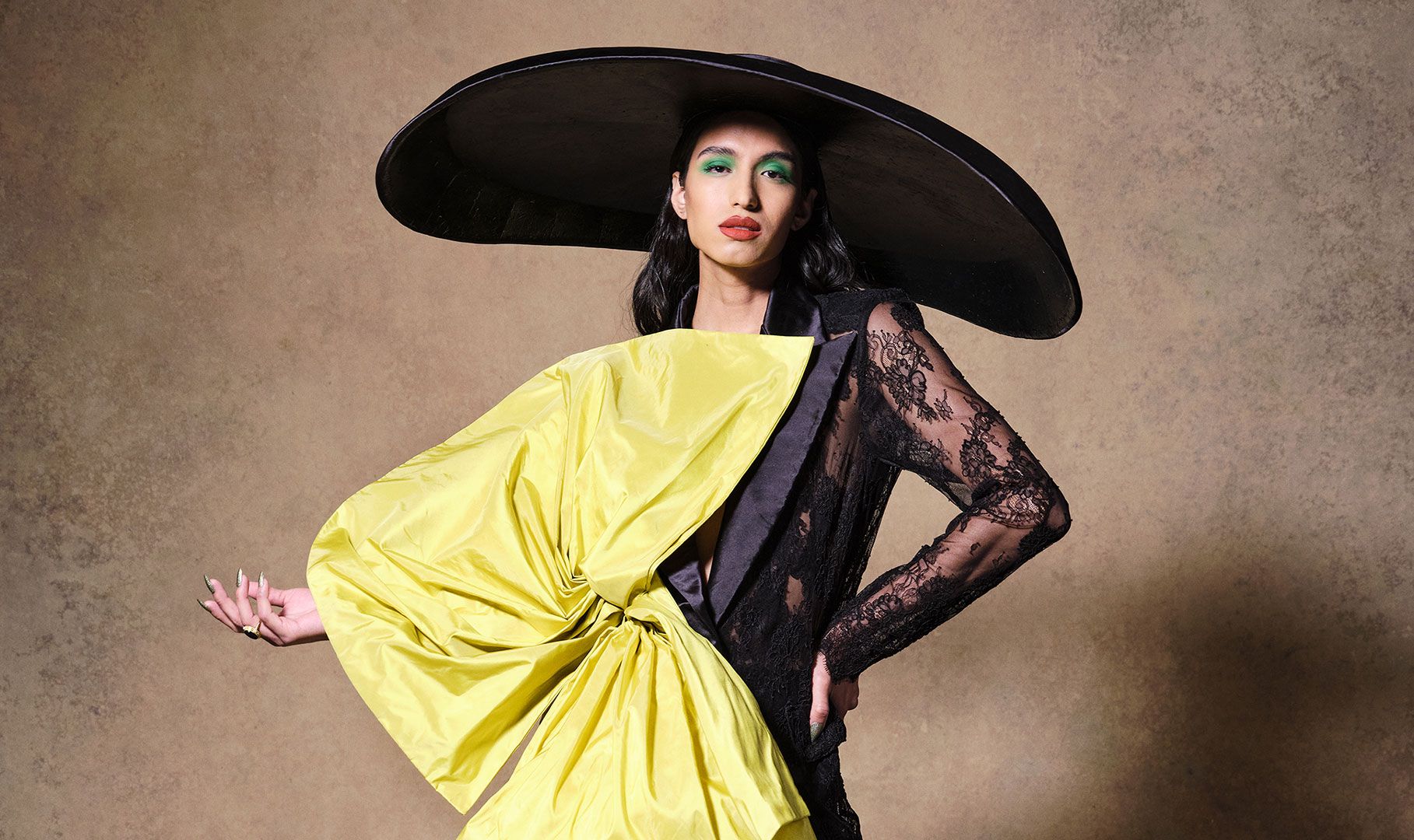
You’ve had such an amazing few years—what has been the milestone moment for you so far?
You asked for one but I’ll give you three! One of the biggest things for me was being featured in the New Yorker—it felt like such a milestone moment. In terms of my design career, there have been a lot of extraordinary moments. Working with Adele on her music video and flying to LA—she was the funniest person I’ve ever met. So it was quite surreal. My last show creatively was a big turning moment, because it was my first show after the start of the pandemic where we could be collaborative in the physical aspects, and we worked with Sam Smith [who performed during the presentation]and insane milliners. I remember sitting backstage watching it happen and the insane front row and it felt extremely surreal. It felt like a ‘knock-on-wood, it’s only up from here’ feeling. Someone in my team put their hand on my shoulder and I broke down sobbing, like we’ve done this. Two years of the pandemic and doing it with one model, a skeleton crew, working from a hotel room, dyeing fabric in a bathtub—to be able to work in a free space and have the collaboration being so physical, it was just so emotional.
How was Adele to work with?
She’s so amazing to work with. Jamie, her stylist, I met years ago in Los Angeles and she said ‘I’m going to keep my eyes on you.’ She came to me and said she’s doing a new chapter of Adele, and said she needs some fluid fabulousness. I wanted to bring my identity with Adele, who has such a specific style, it’s very Audrey Hepburn and gorgeous. It was such a pleasure to mix my style DNA with hers. Those are the collaborations I love. It’s like working with Harry Styles—the moments with people that are tactile and hands on and to be in a space when you’re learning from someone is so special. Instead of going through PRs and managers and agents, but dealing with someone who has a vision and really believes in the work too. You learn from those really collaborative moments, and Adele was just fabulous!
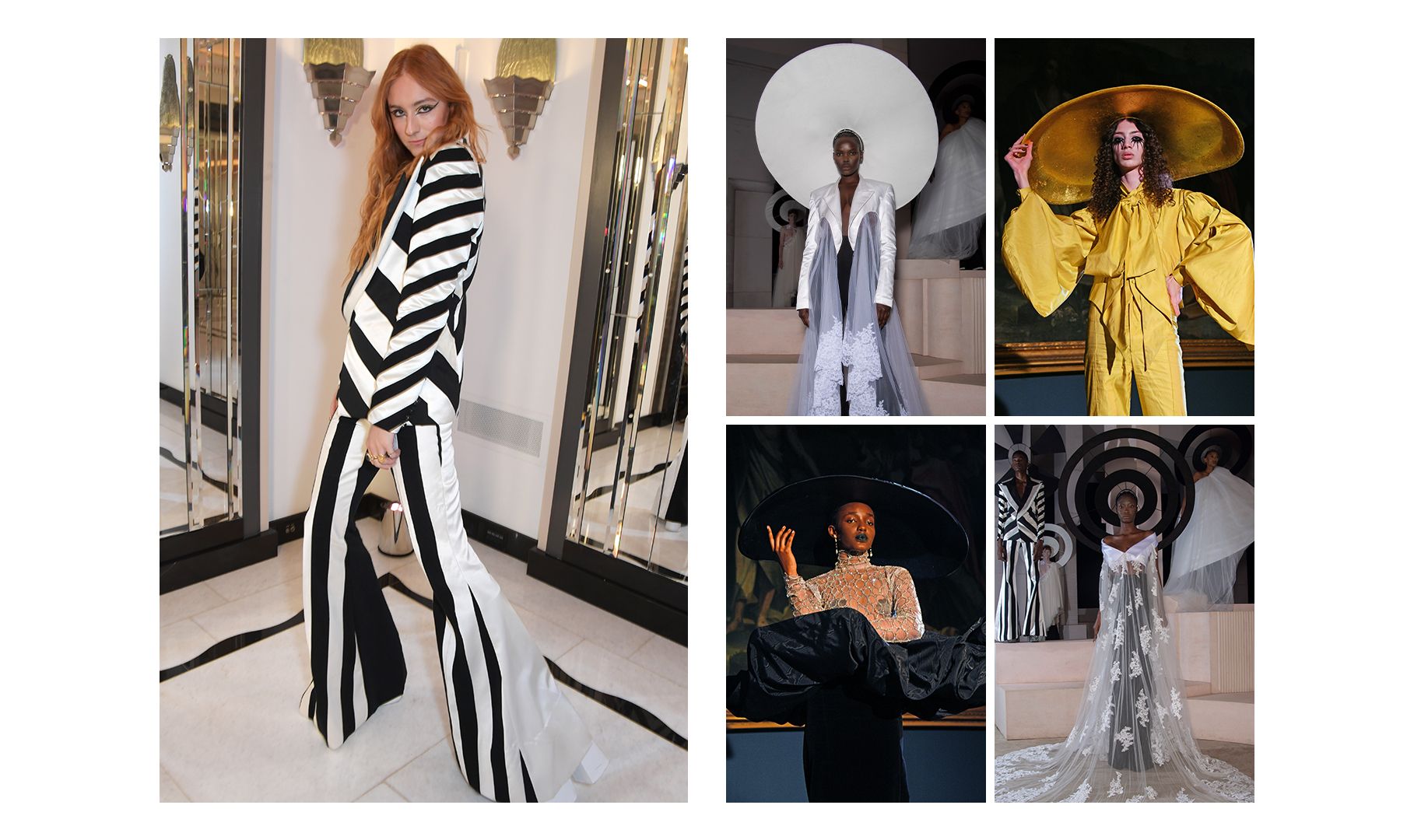
Is there anything left on your bucket list that you really want to achieve?
The Oscars is still my one red carpet I’m yet to hit with a major moment. I’m hoping the next Oscars I can. As a young designer I’m excited to see people taking more risks. As people always wear designers they have contracts with, so you see everyone wearing the same thing, and I’m excited for the people pushing the envelope whether it’s Adele, Harry Styles or Selena Gomez, they are taking a risk. Stylists are seeing the pay off. I’m excited for the designers I sit with. It’s very exciting to see those new designers hitting the red carpet, and we need to see that change. It’s like come on show me a bit of a mix!
I also really want to direct a film. My father has been in film his whole life and he won an Oscar a few years ago for an incredible documentary, and I watched that process and it reminds me of the story telling in my own collections. For me, I would love to do something directing or costume wise. Baz Luhrmann if you’re listening! It’s a mix between Jean Paul Gautier the Fifth Element costume design or me doing a Tom Ford Nocturnal Animals. Maybe taking a year to do an indie film with someone fabulous!

How do you approach collaborations?
“It’s such an easy thing. I couldn’t be doing what I’m doing without these collaborations, so whether it’s a Klarna or a Missoma, and the things I have in the hat waiting to pull out. I go about it from a very gut feeling—I’m unapologetically who I am, and fighting for fluidity, and if it meshes well then it meshes well. I have been lucky that things have always arrived at the right timing. Klarna, I wanted to do something within the mentoring space in a way that felt authentic and that could be very achievable and make an impact. It’s when there is a synergy and a common excitement. I am 25 and I do want to do things that excite me, and I have the big business brain, and I couldn’t be 25 making a company through a global pandemic making big hats and gowns that are fluid without having a business brain. It’s a gut intuition.”
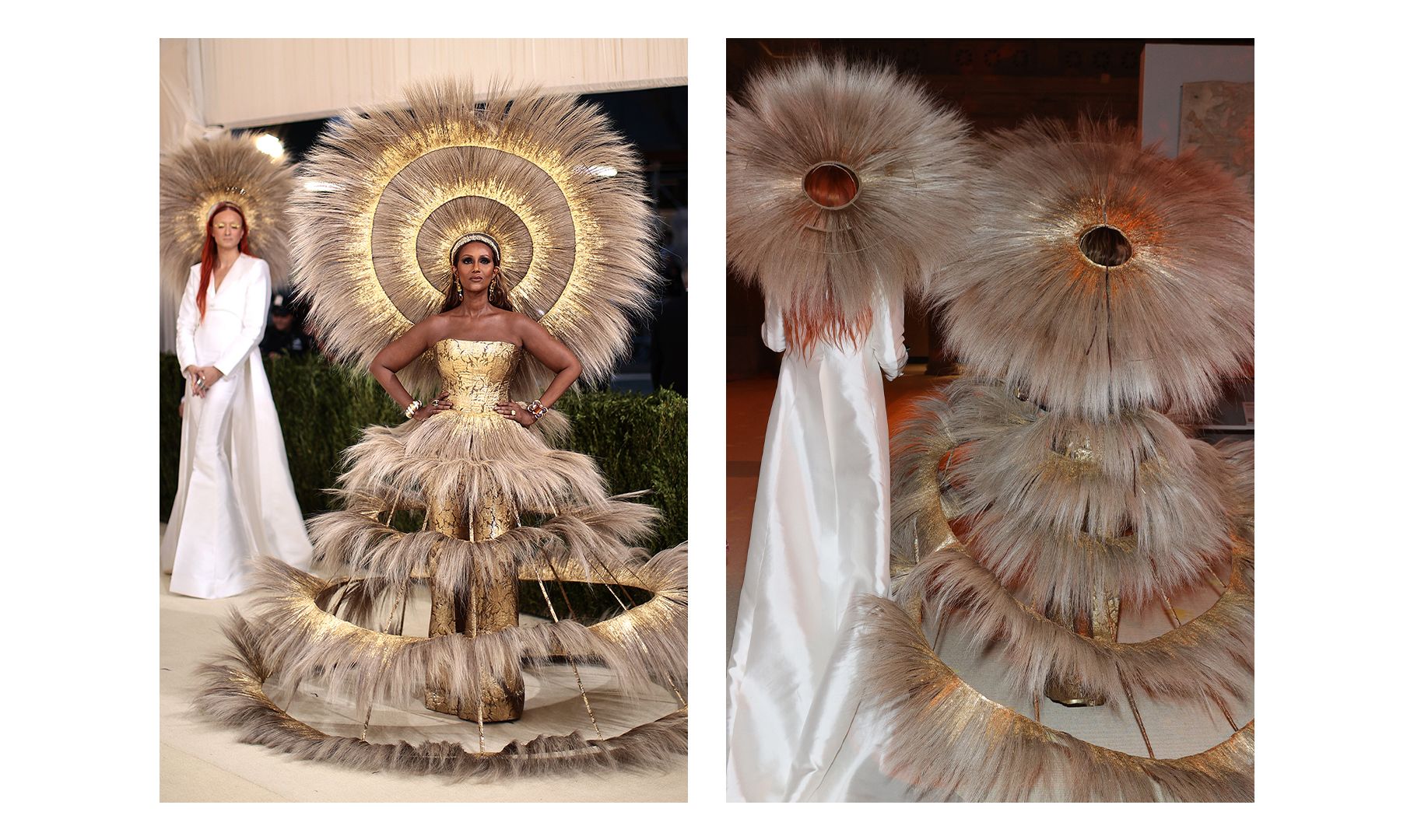
What will you be looking for when it comes for talent in the Klarna competition?
We are looking for the next team for the September collection at the moment, and I just love looking through people’s work and so for me, I love to see excitement and innovation. I like when people look at something through a lens. My advice I always give to people is ‘Look at something from a personal lens. Don’t do what you think people want you to do, or do something because it’s trendy or cool or in right now.’ Whether it’s your culture or your sexuality or your background, I love looking at people’s work when it’s tailored to who they are and how they see the future. I think that’s always amazing. I have at times been like ‘Who is your market, who is your person?’ and that just makes it not me any more and the more I did that I lost who I was. The minute I was like ‘I’m doing gender fluid and myself’ is when global retail partners started happening because it was real to who I was. When I’m looking at these Klarna applications, it’s people who are looking at life through their personal lens that will stand out. Sustainability is also really important to me. My last collection was all upcycled upholstery fabrics, so I always look out for the sustainability aspect too.
There are certain signatures that are very Harris Reed—how did you find those signatures?
The first outfit I ever made was the pink look, and at a time when I was going by they/them and I didn’t see any representation of myself out there. Brands like Gucci were starting to touch on it but I didn’t have money for Gucci. I made something that was authentic to myself and my body. I was looking at the 70s and regal realness and the 17th century and these princes—for me it was a Queer mash up, and it was camp fabulous and over the top. I made that look that became the staple of everything I did after, and it was just because I needed something for a night out and had two hours to make something! It’s like that flare that I did for Harry’s tour and the blouse that I did to everyone from Solange Knowles to Adele, and it became the staple. The first thing I ever made at Central Saint Martins was a giant white hat, that ended up being shot on Solange Knowles. That hat kept being a staple and I’ve continued to play with the circle, and how it looks on the head and the face. It’s the flair, the blouse and the hat for me. People always know me for platforms, because I’m 6 foot 4 and always wear at least a four inch heel. So I’m always close to 7 foot. Flares are fun and look amazing on different body types, whether it’s Lizzo who is curvaceous and fabulous or Harry Styles who is slightly shorter and a different build. Flares have a universal way of looking amazing. Musicians want the idea of movement and physical fluidity on their body and so it’s always felt very true to the brand.

When the Harry Styles moment happened, we weren’t seeing gender fluidity from other places—how do you think it’s moved forward since then and what still needs to be done to be more inclusive?
There has been a lot of amazing strides, whether looking at casting and using non-binary, trans models and more queer representations, or brands going into more “feminine” silhouettes as society would deem them on “men”. There is still a lot to be done. I think there is a larger conversation, and a lot of people moving to fashion being more fluid is a lot for commercial reasons. I hope I’m being successful because it’s something I really believe in and there’s a lot of transparency there. When it works, with a brand like Alessandro Michele at Gucci, it’s just part of his life to highlight his “weirdos”. I love that he says that because it’s us all being that weird kid and claiming that word for yourself. But when a brand does a unisex fluid range that is grey sweatshirt and hoodies—that just isn’t it. I’m quite excited for the next batch of creative directors who will switch it up and how people will implement their own ethos into major houses—that’s how you will get pure change. When people don’t have a connection to fluid fashion and are making decision, it doesn’t really work.
What do you think are the biggest misconceptions about gender fluid fashion?
People are always like ‘I love it, it’s so free, and fun’ — and then put it on a white cis male the whole time. That’s not really fluid. They get it from a design perspective, making it more universal and different body types, but from an ecommerce perspective or advertising perspective it falls back to being the same choice models with a lack of diversity. The 360 is when people go wrong with it. It’s about having that perspective across models, designs, sizing and everything you do.
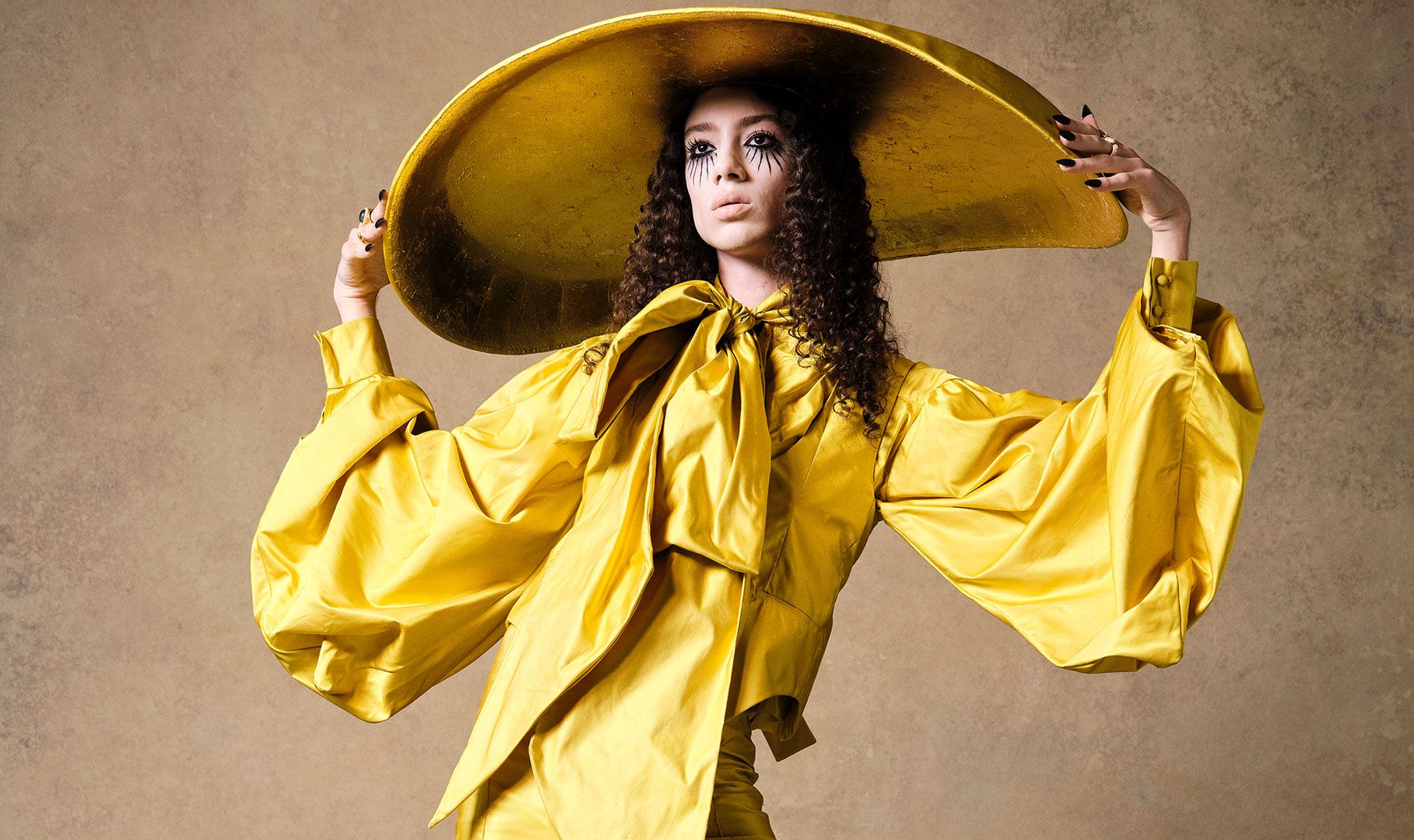
What is it about upcycling that really speaks to you?
Going to Central Saint Martins for five years it was really about how do you challenge yourself and sustainability was one of the main topics. From early on I knew my ethos was fluidity and then I thought what can I do that reflects what goes on in the world as well. For me I wanted to reuse fabric to feel ultra luxe—so it pushed me to find dead stock lace and amazing upholstery silks. I love a challenge and I like when there is a constraint because you get much better designs. If you have a full budget you can get a bit lazy. Everyone’s favourite look last season was the full yellow look—and that was one I designed with a massive gown on the bottom and we didn’t have enough fabric for the bottom, and I was so upset. Buying more yellow silk would defeat the purpose of it being made completely from dead stock and made into something new. We made it into trousers and a more tapered waistcoat and a larger blouse, and it ended up being everyone’s favourite. Through the challenges you get something much more beautiful.
Setting up a business is such a huge undertaking—what have you learned in this process?
When you go to fashion school, you’re not taught how to do an invoice. You leave school with big ambitions and you learn along the way. I have had collaborators and mentors who have been able to give me guidance. I’ve had to lean on my community to get where I am, it’s now been three years and we are turning a profit each year, I’m hiring a new person, I’m privately owned. I’ve been fundingit through projects to keep building everything up. It’s been about having amazing mentors. In 2022 I always say ‘does a fashion brand even make clothing any more?’—that’s joking, but I want to do made to measure because it allows me to be fully gender fluid because each body can be fitted correctly. If we’re doing a partnership, that needs to be clever and beautiful, and align with the brand, but bring in capital so we can go into our next collection. It’s funny but I wear a lot of hats for someone who makes hats!
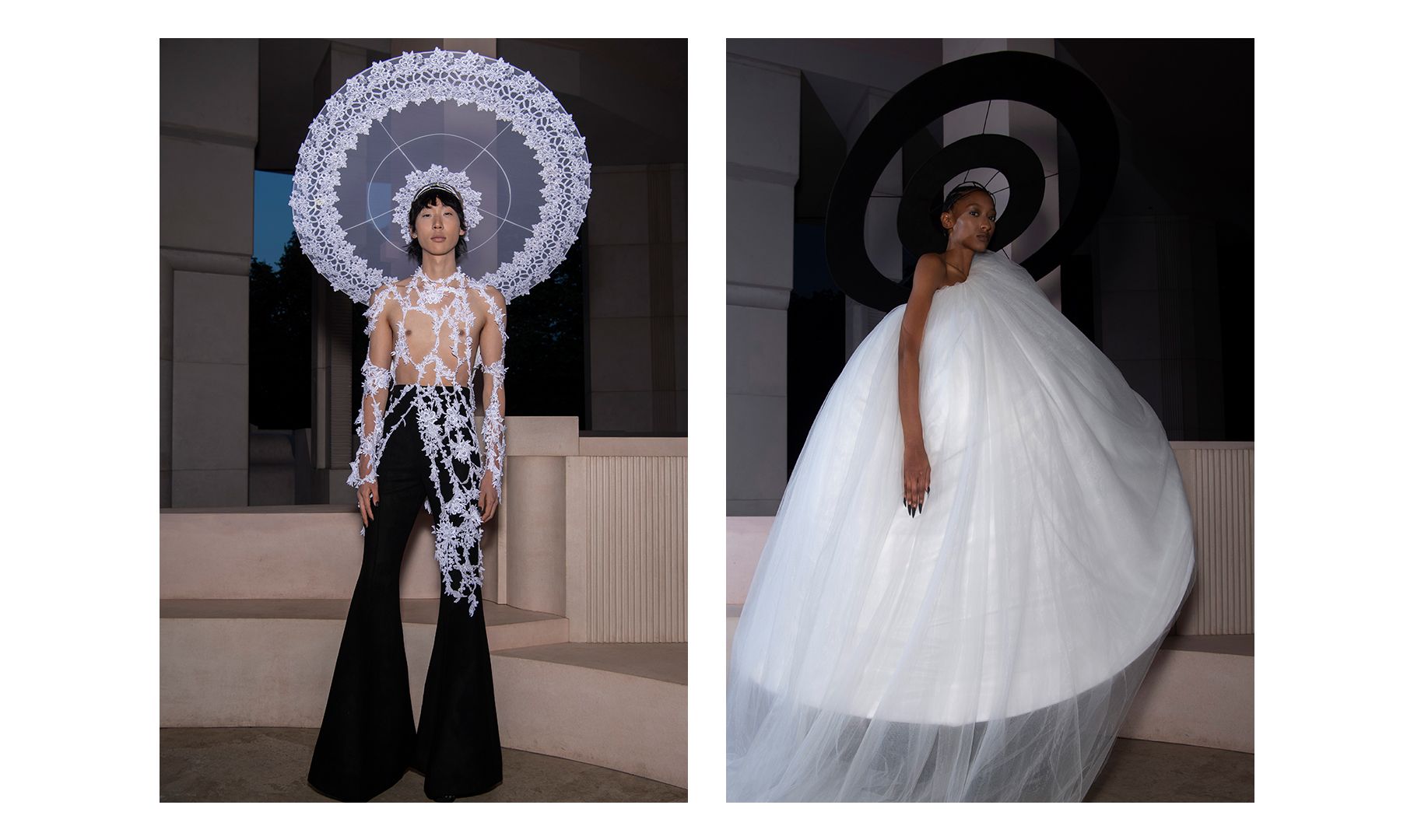
How does London influence your style?
London to me is everything. I’ve now been here almost 8 years, but can’t imagine being anywhere else. There’s a grit and a rawness. I remember first being here and being in this incredible scene of drag, and it’s such a melting pot. If I go back to LA where I’m from I’d be clutching at straws to find the inspiration, whereas here, going to the V&A or a rave in a forest, there’s so much inspiration everywhere and it fuels what I do and my brand.
Have you always expressed yourself through clothes growing up?
I’m really gross and say ‘I didn’t chose fashion, fashion chose me!’ I was very “flamboyant” from a young age and was very labelled as a child. Through what I wore I reclaimed who I was and my identity. I enjoy dressing up and the art and performance of dressing up, even more than the design process. I think that’s why I really enjoyed interning at Gucci in Rome, because it was all so informed from vintage and history and was very tactile in that sense. For me fashion was how I reclaimed who I was and my authentic self.
Where do you shop for yourself when you’re not wearing your brand?
I am obsessed with Retro Woman in Notting Hill. It’s where I get the majority of things—in the basement you get Prada trousers for £20. I love Dover Street Market, and rarely buy things, but I love the amazing edit of what is beautiful. I love a department store and to watch what people are touching, buying, and looking at. I am very obsessed with the experience of shopping. Ladbroke Market I’m obsessed with too. My favourite brands are Haider Ackermann and Ann Demeulemeester.
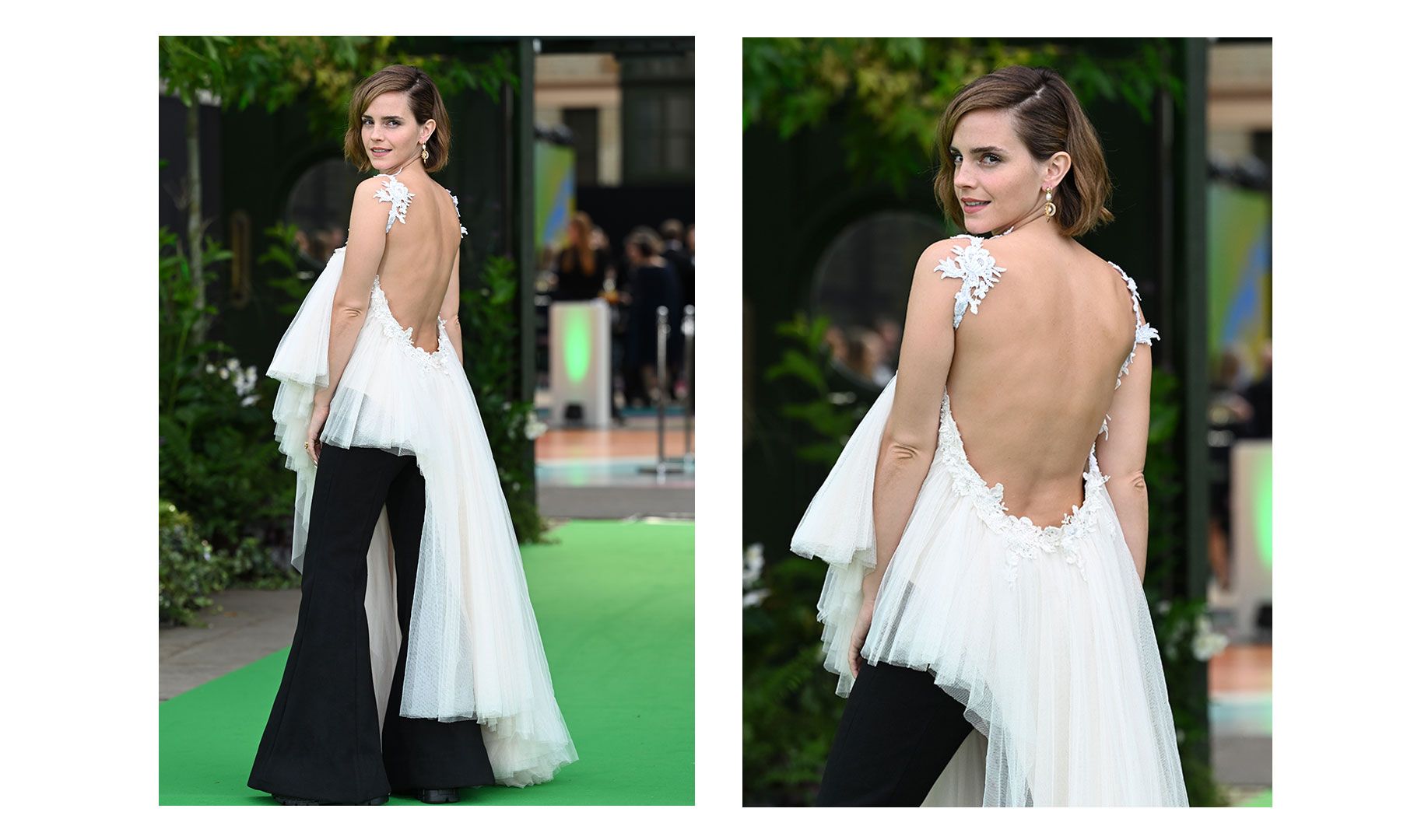
I can’t imagine how many messages you get on Instagram all the time—how do you switch off?
I have a really good partner who makes me hide my phone when I get into the house. I’m very fortunate that I have a reach to people. If you want someone who is fighting for something and has a meaning then I’m that person. I’ll have thousands of messages from people saying they came out or they didn’t know you could have a career in the arts—it always makes me cry. I get messages from people all over the world. I know what it’s like to be that young queer person and the only queer representation I saw was Kurt Hummel on Glee and that was so far from me. I want to be any kind of guidance or mentor to people, so switching off is turning my phone off and in my kitchen drawer, and not jump on Instagram, Whatsapp and email. I can’t be available to everyone all the time because then I’m not the best version of myself to create something new or say something or go do a talk. I’m 25 so I’m learning the balance of when to say no and to respect my own time. That is why I’m excited by this Klarna competition because it gives people solid time and support from me. Any mistakes you can share also really help people learn, so sharing vulnerability too can really help someone grow.
Click here to learn more about Harris Reed’s competition with Klarna and the mentoring support the winner will receive.


